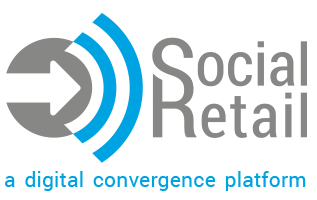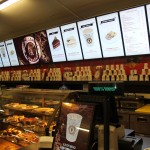In-store marketing has evolved from simple POP displays into full-blown digital, one-to-one experiences. A customer journey can now involve sophisticated and unique elements. These elements enhance a store’s ability to give rich information or catered offers all without the need to take up a sales associate’s time.
The in-store digital marketing revolution began with computerized kiosk displays, but now it takes multiple forms, including Bluetooth low energy, near field communication and proprietary smartphone apps. Through subtle, almost invisible means, a customer can be surrounded by digital interactivity, communication and even mobile-based POS. Choosing the method your brand uses involves looking at the strengths and weaknesses of the respective technologies. Specifically, what can beacons do that kiosks cannot?
The Capabilities of Both Kiosks and Beacons
First, one needs to recognize that the two possibilities offer similar baseline services. Both are able to:
- Create exciting and interactive in-store customer journeys
- Make tailored, relevant offers to customers
- Add new marketing opportunities
- Provide information for customers
- Page sales representatives for more assistance
- Allow customers to create custom orders or items not available on the sales floor
- Act as a non-cashier-based POS, although beacons have more flexibility with this function
Why Beacons Are in a Whole Different League
Beyond these similarities, kiosks and beacons are in two different worlds. The fact is that beacons represent a new, growing field of technology and marketing research. Stores that implement beacons are giving themselves much more capability, flexibility and interest potential from customers. Beacons can also be considered to be more “future proof” than kiosks with technology that can scale along with daily advances without the need to constantly replace equipment.
Smartphones and the Wireless Dream
A huge reason that smartphones have become so popular is that they are able to eliminate the steps a person has to take between getting information and accomplishing a task. Rather than creating new barriers between technology and a user’s desired goal, smartphones demolish barriers with seamless interactivity between apps, browsers and online information transfers.
“Seamless” would be the operative word. Customers and technology users want as little friction as possible while working to accomplish a task. Someone can use their smartphone to research restaurants in the area, look at reviews, page a cab and reserve a table all within mere moments.
Beacons enhance this capability by adding an exclusive in-store connection between shopper and branding. To use a kiosk, customers must first walk up to the computer and take enough interest to browse or interact with it. Also, they must learn to use the interface, considering that most kiosks use a proprietary operating system. The result is often frustration from a feeling of separation between the device and the user.
With a beacon, customers get to use their smartphones to do most of the interaction. Rather than having to take interest in big, hulking computer displays, a customer will see that they have connectivity with a nearby beacon. They can get turn-by-turn directions to a product they want, or they can see offers in the palm of their hand rather than having to go out of their way to find them. The experience is seamless — the ultimate goal of most recent technological advances.
Future Proofing
Another advantage of using beacons is that they are not as mired in the technology that operates them. Their prime function is to identify nearby shoppers and transfer information to them. As customers upgrade their phones and new developments arise, your brand can focus on software rather than buying new hardware.
Kiosks often feel antiquated and gather dust. Even after just a year or two, they appear sad or obscure to shoppers. One only needs to visit the wedding registry kiosk at a major big box retailer to see the difference between that and the streamlined online registry.
With beacons, the information can scale along with new developments and new phone hardware. Your store can invest instead in screen displays that present tailored information — hardware that becomes obsolete far slower than computer stations.
Beacons also have the added bonus of tracking customer movements and data in-store, providing analytics to inform business decisions about retail space arrangements and display effectiveness.
Basically, beacons are the next evolution of the kiosk concept in every sense. They allow customers to interact with in-store technology in a familiar way and reduce the steps needed to get what they want.
Digital Social Retail has tools that allow retail brands to implement beacon technology and manage communications, offers and data analytics at the same time. Best of all, the software suite also lets businesses manage their other digital marketing efforts, like social media campaigns and PPC. To learn more, please visit our products page.





